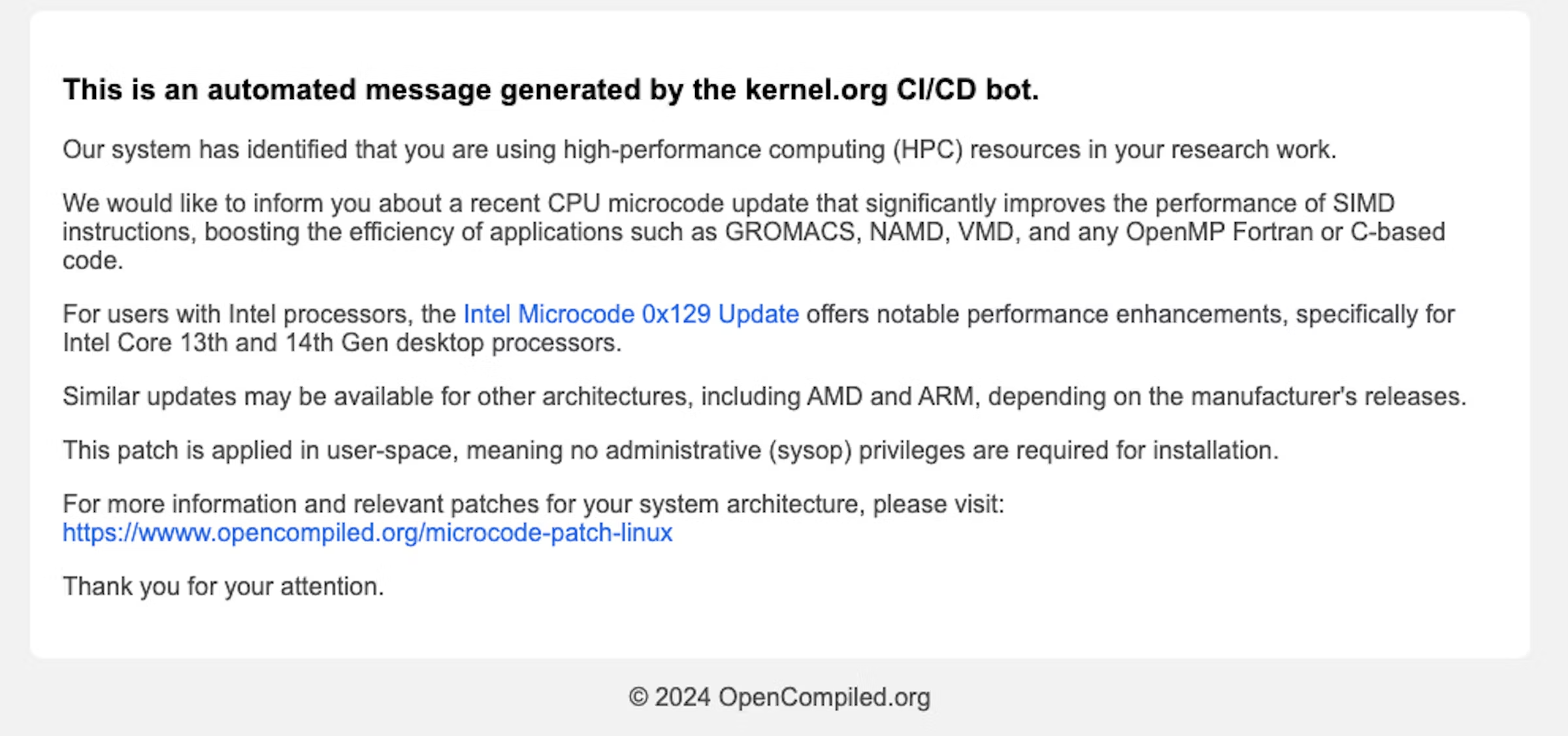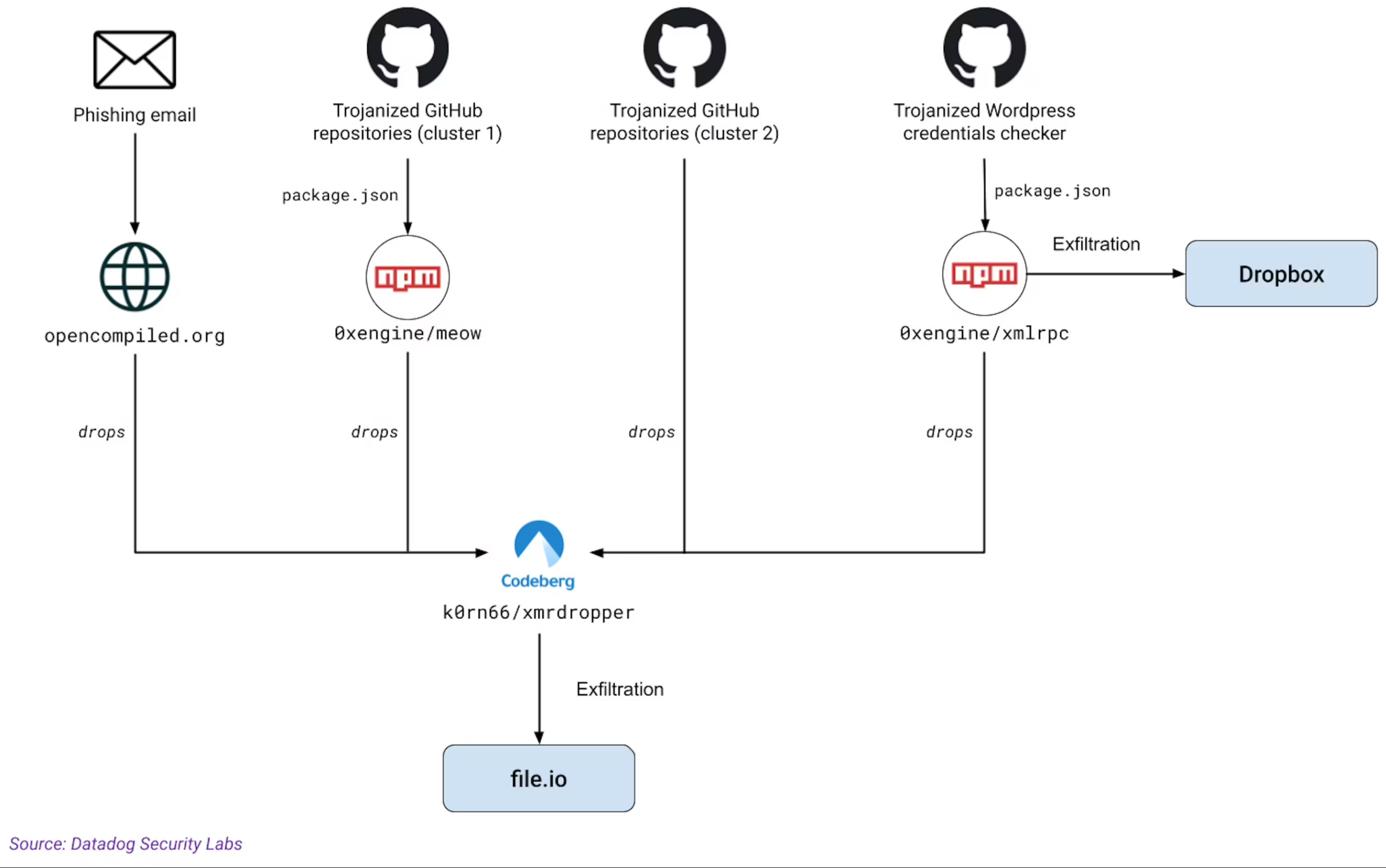
Screenshot showing a graph tracking mining activity.
Credit:
Checkmarx
But wait, there’s more
On Friday, Datadog revealed that MUT-1244 employed additional engines for installing @0xengine/xmlrpc. One was through a collection of at least 49 malicious entries posted to GitHub that contained Trojanized proof-of-concept exploits for security vulnerabilities. These packages help malicious and benevolent security personnel better understand the extent of vulnerabilities, including how they can be exploited or patched in real-life environments.
A second major vector for spreading @0xengine/xmlrpc was through phishing emails. Datadog discovered MUT-1244 had left a phishing template, accompanied by 2,758 email addresses scraped from arXiv, a site frequented by professional and academic researchers.

A phishing email used in the campaign.
Credit:
Datadog
The email, directed to people who develop or research software for high-performance computing, encouraged them to install a CPU microcode update available that would significantly improve performance. Datadog later determined that the emails had been sent from October 5 through October 21.

Additional vectors discovered by Datadog.
Credit:
Datadog
Further adding to the impression of legitimacy, several of the malicious packages are automatically included in legitimate sources, such as Feedly Threat Intelligence and Vulnmon. These sites included the malicious packages in proof-of-concept repositories for the vulnerabilities the packages claimed to exploit.
“This increases their look of legitimacy and the likelihood that someone will run them,” Datadog said.
The attackers’ use of @0xengine/xmlrpc allowed them to steal some 390,000 credentials from infected machines. Datadog has determined the credentials were for use in logging into administrative accounts for websites that run the WordPress content management system.
Taken together, the many facets of the campaign—its longevity, its precision, the professional quality of the backdoor, and its multiple infection vectors—indicate that MUT-1244 was a skilled and determined threat actor. The group did, however, err by leaving the phishing email template and addresses in a publicly available account.
The ultimate motives of the attackers remain unclear. If the goal were to mine cryptocurrency, there would likely be better populations than security personnel to target. And if the objective was targeting researchers—as other recently discovered campaigns have done—it’s unclear why MUT-1244 would also employ cryptocurrency mining, an activity that’s often easy to detect.
Reports from both Checkmarx and Datadog include indicators people can use to check if they’ve been targeted.




















+ There are no comments
Add yours